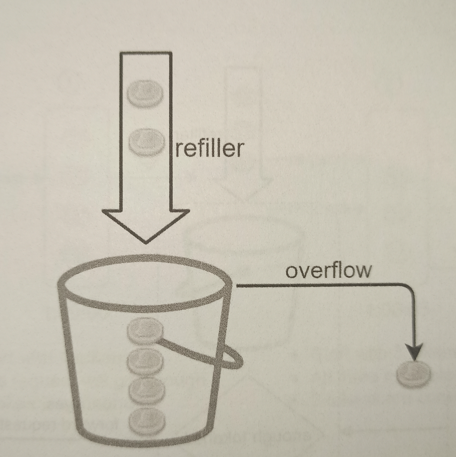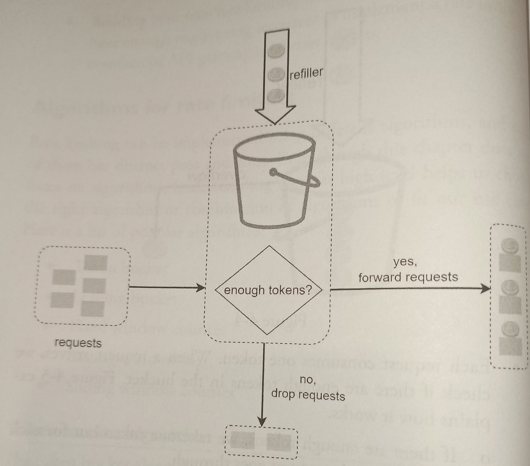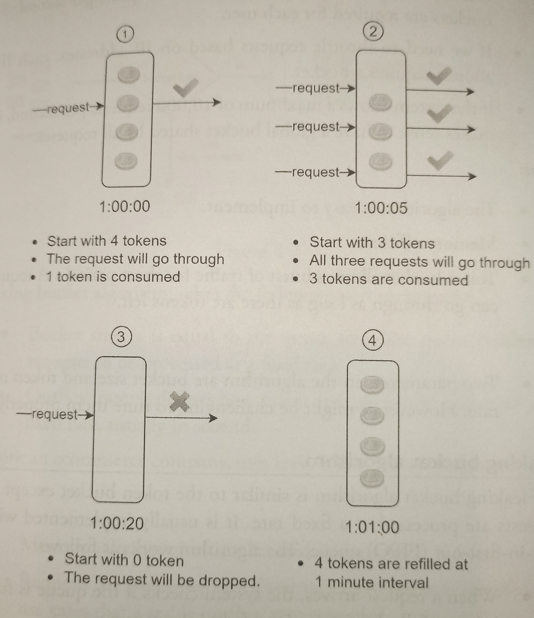Token Bucket Algorithm
- Overview
- Pros
- Cons
Overview
Token Bucket is widely used due to its simplicity.
Both Amazon and Stripe use this algorithm to throttle their API requests.
- A token bucket is a container that has a pre-defined capacity. The tokens are put in the bucket at preset rates peridocially. Once the bucket is full, no more tokens are added.

- Each request consumes one token. When a request arrives, we check if there are enough tokens in the bucket.
- If there are enough tokens, we take one token out for each request, and the request goes through.
- If there are not enough tokens, the request is dropped.

- The token bucket takes two parameters:
- Bucket size: the maximum number of tokens allowed in the bucket.
- Refill rate: number of tokens put into the bucket every second.

- How many buckets do we need? This varies, and it depends on the rate-limiting rules and use cases. Here are a few examples:
- It is usually necessary to have different buckets for different API endpoints. For instance, if a user is allowed to make 1 post per second, add 150 friends per day, and like 5 posts per second, 3 bucket are required for each bucket.
- If we need to throttle requests based on IP addresses, each IP address requires a bucket.
- If the system allows a maximum of 10,000 requests per second, it makes sense to have a global bucket shared by all requests.
Pros
-
Easy to implement.
-
Memory efficient.
-
Allows a burst of traffic for short periods. A request can go trough as long as there are tokens left.
Cons
- Two parameters are bucket size and token refill rate. It might be challenging to tune them properly.